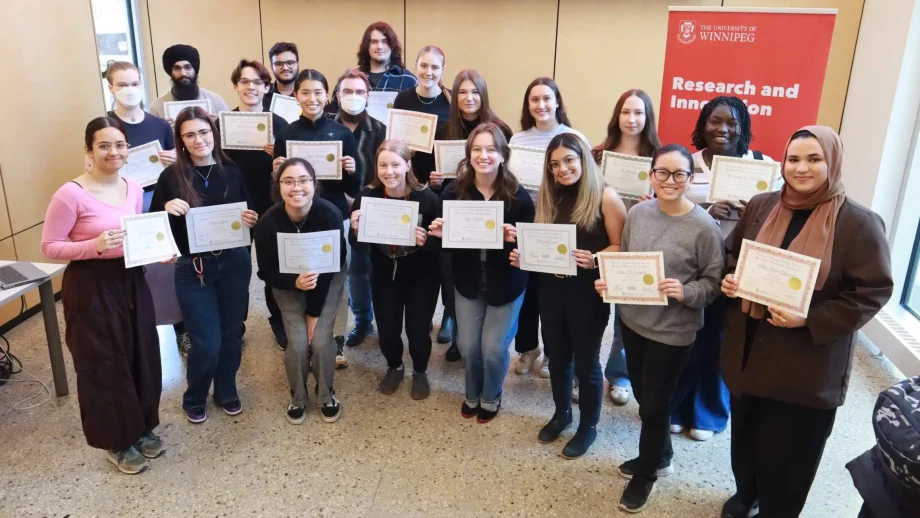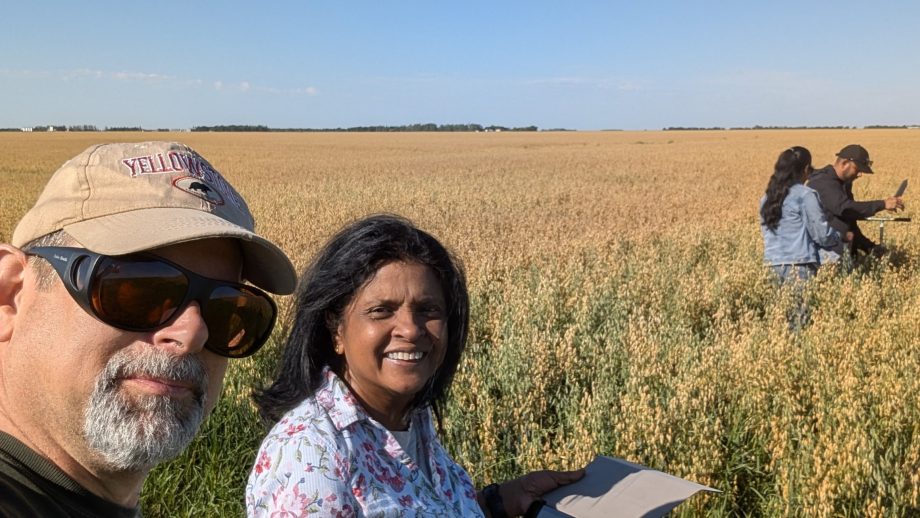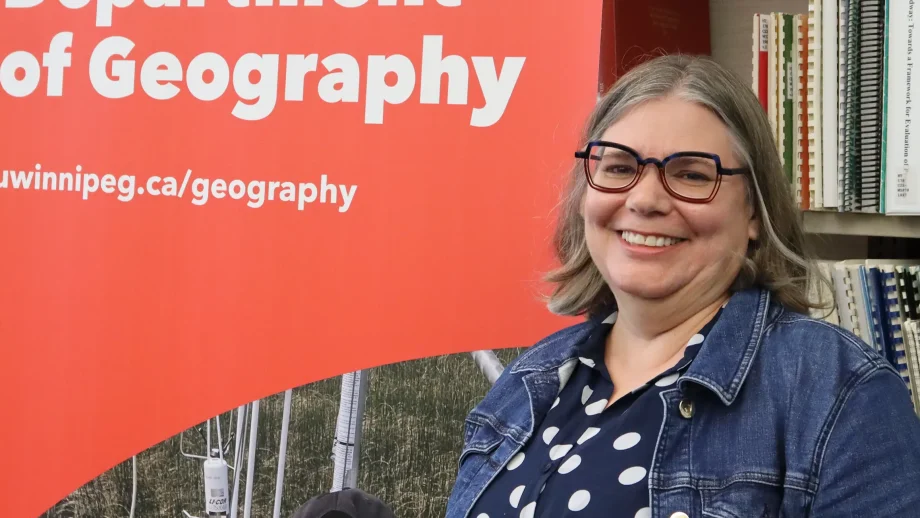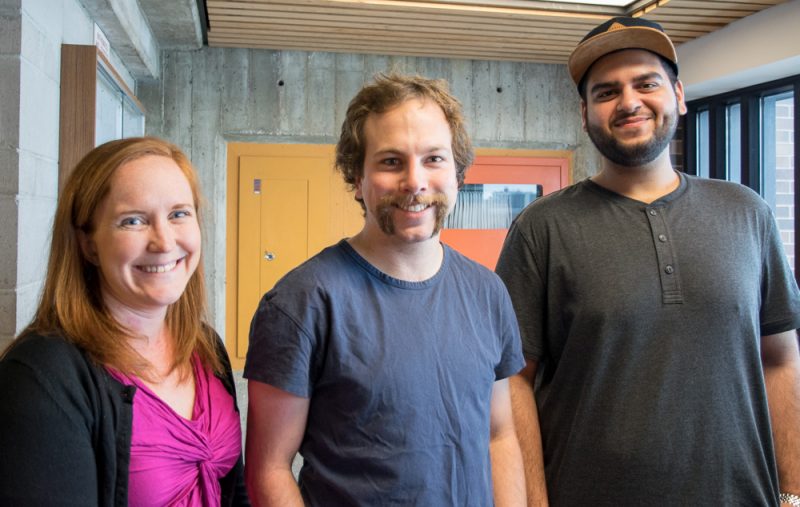
From left: Dr. Nora Casson, Jeremy Leathers, Hamza Amjad.
Two UWinnipeg undergrad students recently plunged waist-deep into a research project at FortWhyte Alive.
Every two weeks from mid-August until the end of October, Hamza Amjad and Jeremy Leathers waded into the ponds at FortWhyte to collect data from a series of bubble traps they built. The traps were designed to capture greenhouse gas-containing bubbles released from the underwater sediment to measure how ponds contribute to gases in the atmosphere.
Amjad (4th-year biology) and Leathers (7th-year biology and geography) are part of a collaborative research group called LUGNuts — or Linked Undergraduate Experiments on Nutrients — made up of students and professors from UWinnipeg, the University of Saskatchewan, Wilfred Laurier University, and the University of Missouri.
Dr. Nora Casson, the LUGNuts lead at UWinnipeg, says there hasn’t been much research into ponds and greenhouse gas (GHG) release until now.
“The rates of bubble release are really variable — both in time and in space. So even from our data, we’d have two traps right beside each other and you could get three litres from one and 30 millilitres from another,” Casson said. “The goal of this project is to develop a better understanding of what controls the rate of bubble release.”
Now that the data collection is complete, Amjad and Leathers are busy crunching numbers and analyzing samples in the lab. Similar bubble traps were set up at the other LUGNuts sites and the team plans to combine their findings and submit the results to an academic journal.
The UWinnipeg project was funded through the University’s Experiential Learning Fund, which aims to get students learning in the field. Leathers and Amjad both say they’ve gained skills they wouldn’t have been exposed to in a classroom.
“I would like to ultimately go into research after my undergrad. I’m planning to get my honours, my master’s, and potentially my PhD later on, so this project is valuable research experience,” Amjad said.
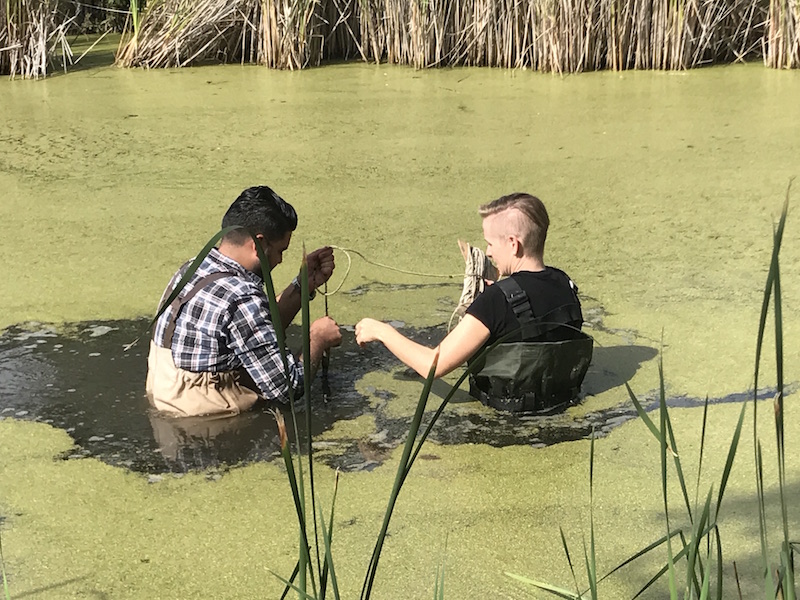
Hamza Amjad (left) and another UWinnipeg student inspect one of the bubble traps at FortWhyte Alive. Photo by Adrienne Ducharme.
Another important collaborator on the project, FortWhyte opted to have the bubble traps placed in high-traffic areas with signage so visitors could learn about the research being conducted — the traps garnered a lot of public interest.
“I got pretty good at describing what the project was because pretty much everyone who walked past would stop and say, ‘Oh, what are you guys doing?’,” Leathers said.
Last November, UWinnipeg and FortWhyte signed a memorandum of understanding that gives faculty members access to the centre’s high-quality facilities for research and teaching purposes.
“Dr. Casson’s project using FortWhyte’s small wetlands for this enlightening research, and all too rare undergraduate field experience, is a perfect example of how we hope our diverse landscape and logistical support is exploited more and more by institutions of higher learning,” said Bill Elliott, FortWhyte Alive President and CEO. “After all, FortWhyte has the privilege, and indeed the responsibility, to serve as a unique campus of learning and inspiration for all ages and sectors of society.”
Learn about the LUGNuts research group here.


